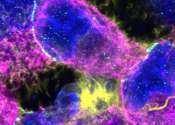Do genetic 'parasites' help the immune system develop and function?
"Parasite" DNA sequences have three potential functions in the development of T (for thymus) lymphocytes, researchers led by Université de Montréal medical professor Claude Perreault show in a study published in the journal ...
Sep 4, 2024
0
59









